
Malta was not somewhere we ever imagined going to when we began planning our adventure. After all, this exquisite Mediterranean island is 60 miles from Sicily and 200 miles from Tripoli… and not exactly a budget destination. However, as luck/fortune/fate would have it shortly before we left Portland we scored a sweet two-week house and dog sit opportunity in Melliha, Malta. And just like that we we going to Malta.
This housesit also gave us the much needed chance to slow down and live as a couple of locals. With three whole weeks to while away our Malta days we set out on walkabouts. As we quickly discovered this tiny island nation is a perfect walkers destination. Official and unofficial paths cross the entire island, and your feet make the best possible vehicle for exploring the natural beauty, ancient ruins, and dramatic coastline vistas that await you.
Malta also has, as we came to learn, a very significant and traumatic World War II history and a vivacious and captivating cultural capital city. It’s undoubtedly a destination you should not ignore on your European adventures.
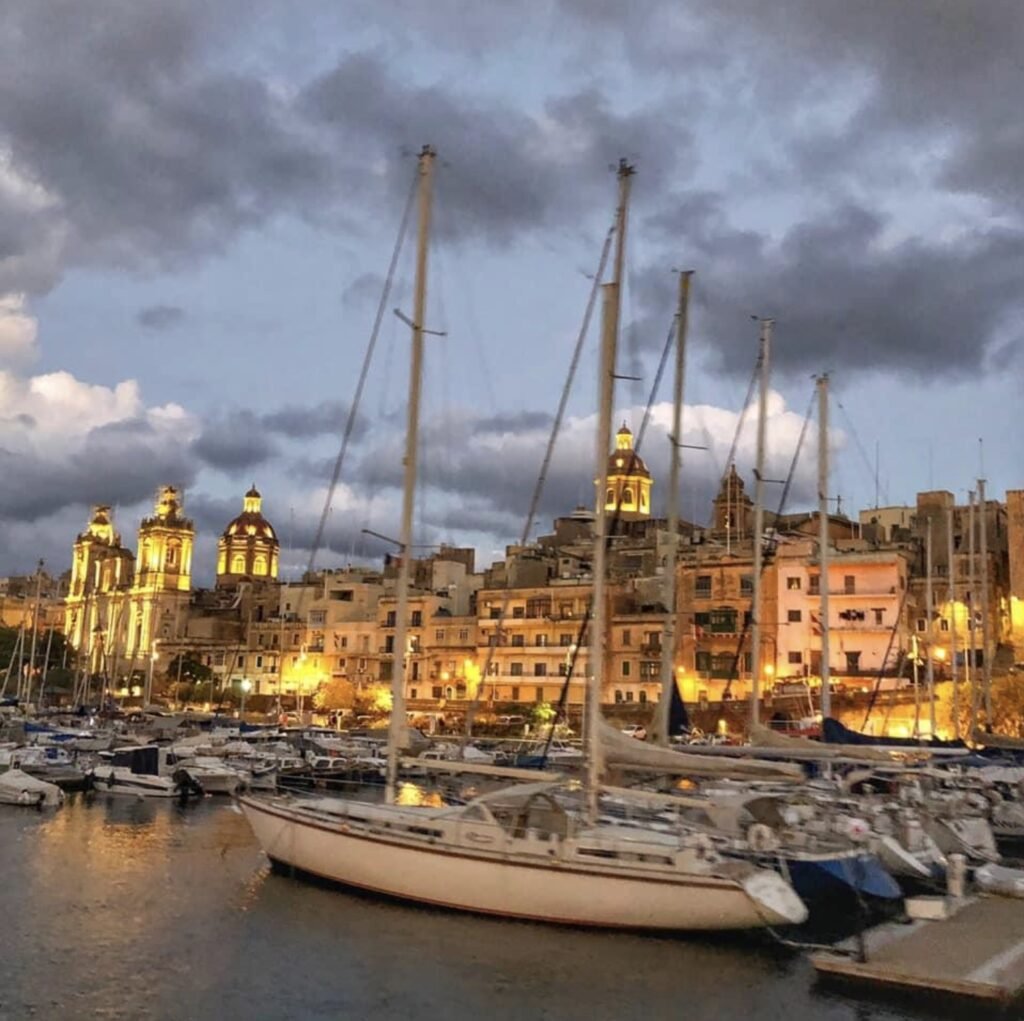
Valletta & Birgu
Before our housesit officially began, we had a full 24-hours to be “off duty” before assuming our dog watching responsibilities. So, off we went to Malta’s capital and biggest city Valletta, named Europe’s Cultural Capital of 2018. Today this gracefully fortified harbor city is reminiscent of Venice and is truly pulsing with life, energy, tourists and expats (especially the sun-seeking Brits!) But it hasn’t always been like this. This very harbor was the epicenter of the Axis Powers attempt to bomb and/or starve the Maltese islands into submission. This is after being besieged by the Ottomans on multiple occasions.
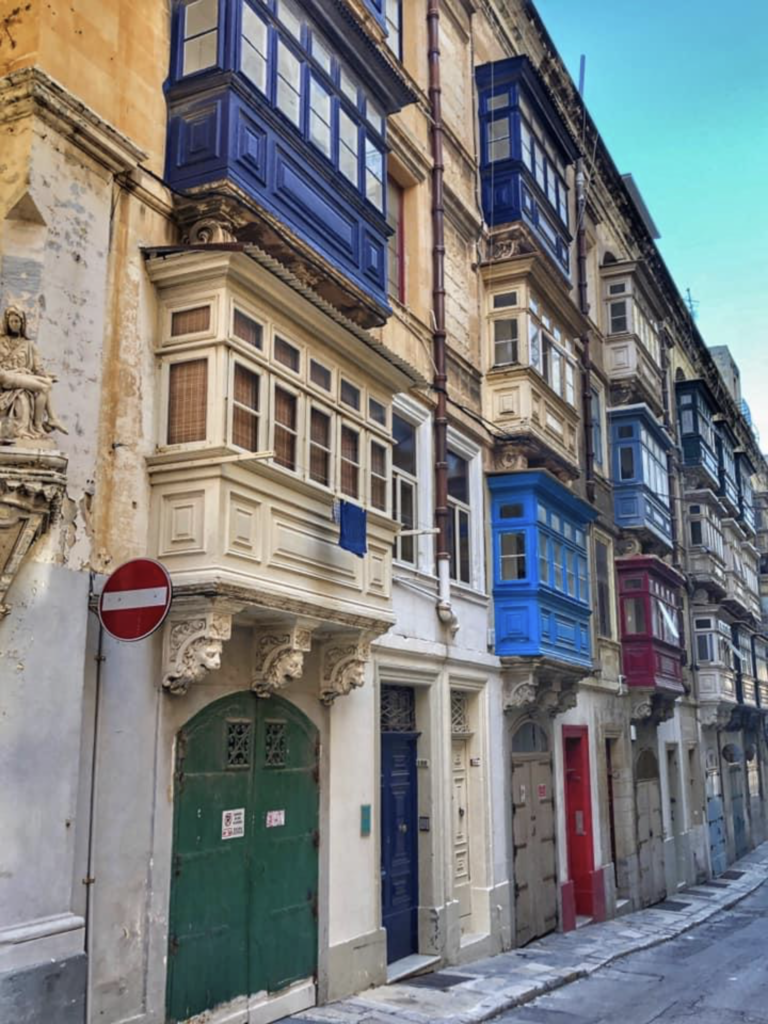
The stunningly vibrant colors, materials, and sizes of old Maltese balconies can be found adorning nearly every street in Valletta.

Looking onto the Mediterranean at Fort St Elmo, which is how the National War Museum. It’s best known for its role in the Great Siege of Malta in 1565, but was also used in WWII.

Sunset over Valletta.

Abundantly colorful character filled doors line every streetscape.

More adorable Maltese balconies. And just in case you’re wondering like us, the Maltese dog breed has no verified historic association with Malta.
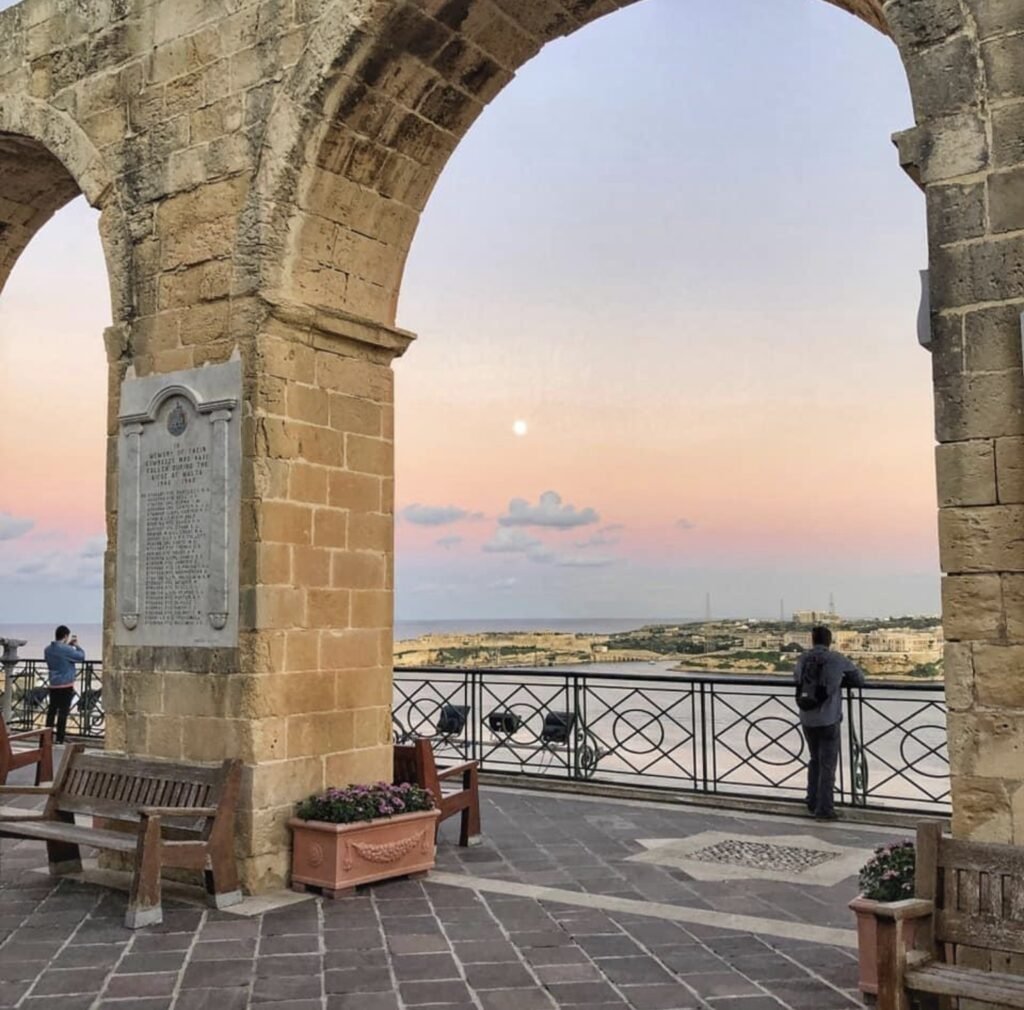
Moonrise over the Valletta harbor. Taken from Upper Barrakka Gardens, a simply beautiful Victorian garden at the top of the 150’ fortified city wall.

Yes, it’s hard not to love.
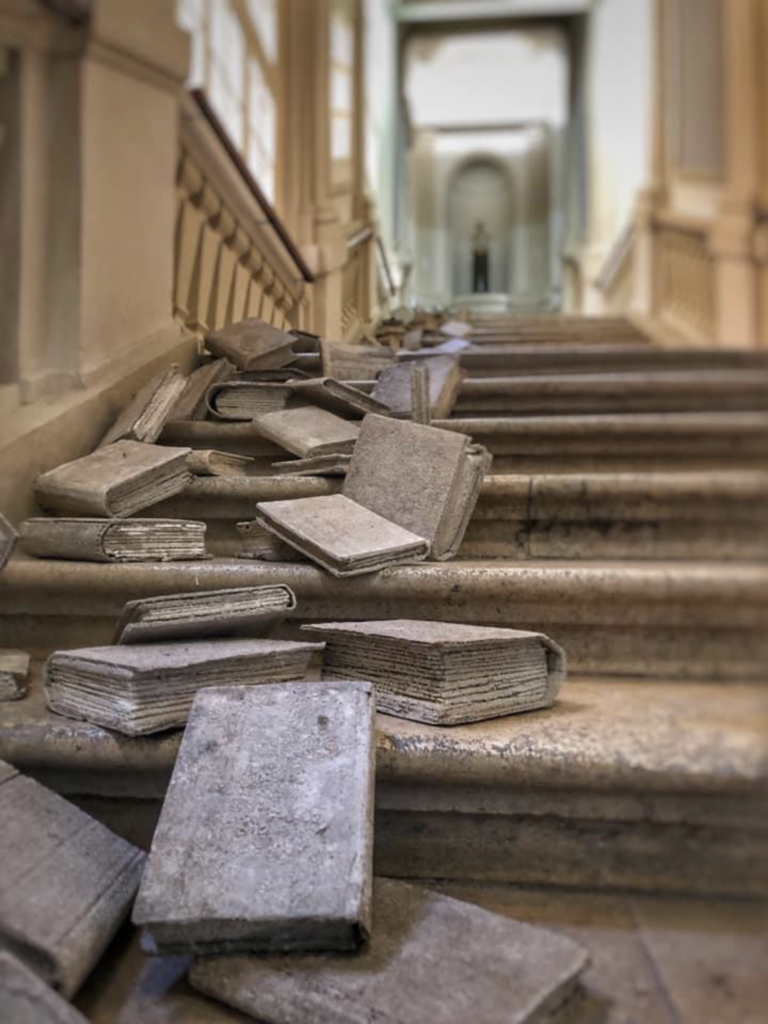
A unique art rendition in the national library.
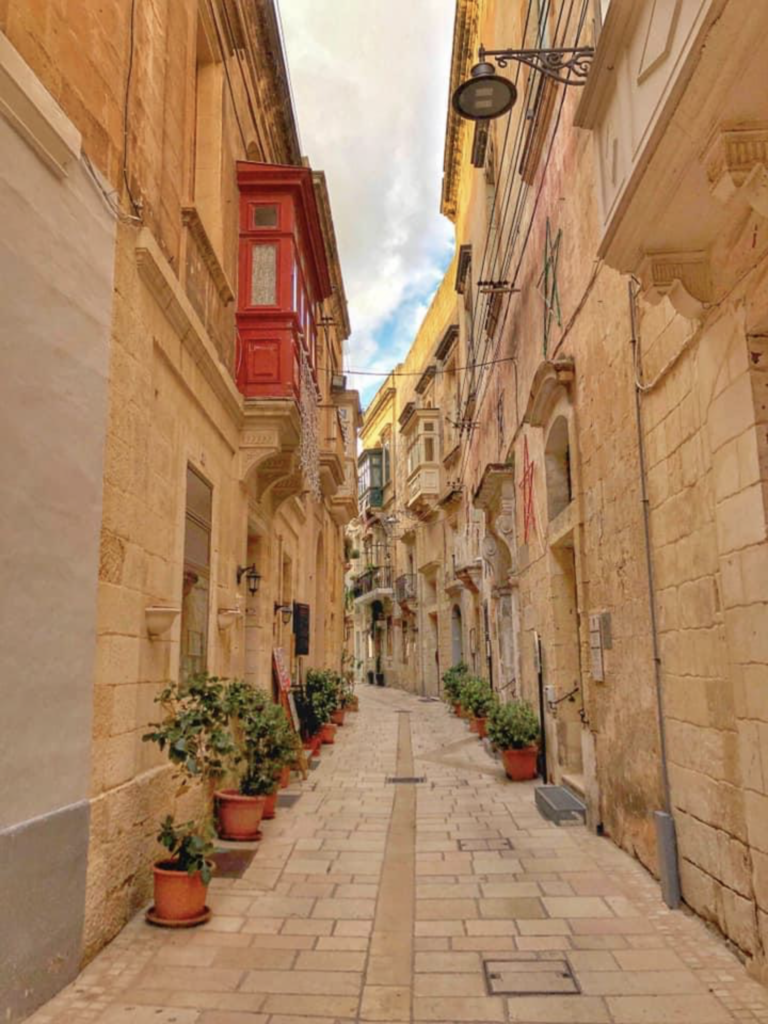
Across the Grand Harbor from Valletta lies the streets of Birgu, also known as Vittoriosa, one of three very old fortified cities all right next to each other. Città Vittoriosa means “victorious city.” It earned this title after withstanding the attacks from the 1565 Ottoman siege. You could walk these streets for hours and never tire of finding striking view upon striking view… an explorer’s paradise.
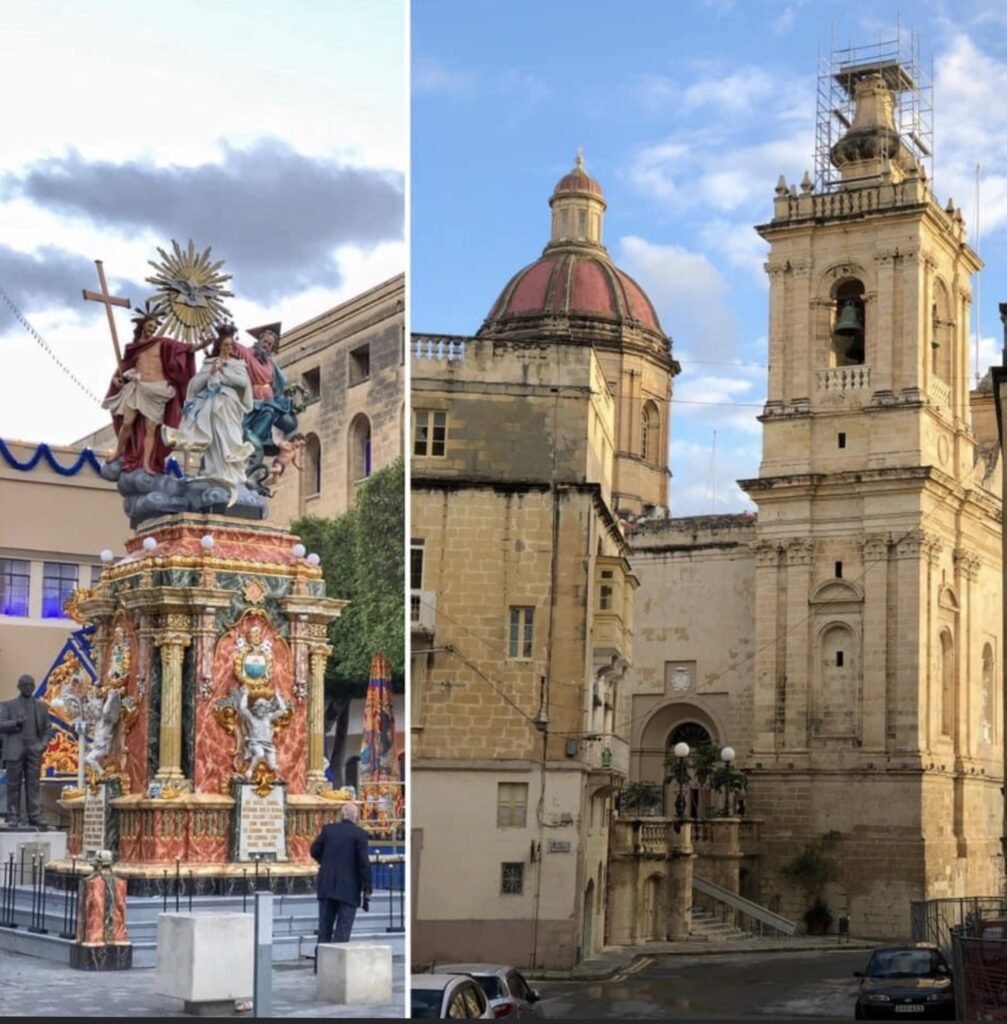
More Birgu scenes.

Can Mandy ask for a better place to run in the mornings?

More Valletta views…including a ridiculously giant cruise ship that seemingly blocked the whole harbor. Also, you’ll notice that English is everywhere. As one of the two official languages in Malta, for us it was so bizarre after 4.5 months of traveling to land in a country of English speakers.
Besides English, Maltese is the first language widely spoken by native locals, it is a wee bit more challenging. Although Maltese has Latin alphabet characters, it sounds more Arabic, along with a dash of Italian. The people of Malta are often Mediterranean-looking.

With 70 degree temperatures and buckets of sunshine, it also felt surreal to see Christmas decorations and lights everywhere. However, because the country is predominantly Catholic, we learned the holiday is highly celebrated. There is even a full-scale model of the town of Bethlehem in the tiny sister island of Gozo! Also, the nativity scene pictured in Valletta is life-sized and has already been exhibited in Bethlehem and at the Vatican, where it’s said to have greatly impressed Pope Francis. To be honest, it looked more like a college level theatre set to us…especially with the unusually positioned cliffhanger over the crib and town drunk passed out behind the sheep!

So, here’s a a few convenient notes we picked up while in Malta:
- BUS. Unless you have a car, (note they drive on the OTHER side of the road here) the bus is the main way to get around the island. It’s 1.50€ a ride. Prepare yourself for island time however! Malta is only 17 miles across, and it will astound, but rides traveling half that distance can take up to 2 hours(!) with all the stops and transfers. Busses are super easy to use, once you manage to get on one. On more than one occasion, we witnessed some unusual practices employed by the drivers including: not having any change (even for a super low 5€ note) when you buy your ticket, choosing not to stop at the designated stops on their route (even with someone waving them down on the side of the road they will sail on by), or seemingly at their own whim they will simply go off-route bypassing numerous stops. This last tactic of skipping stops we suspected conveniently allowed the driver to take a longer “break” at the end of their route. So, again, getting ‘on’ the bus is the trick here.
- GROCERIES. After four months in Eastern Europe, the the supermarket overwhelmed us. Both in selection and price! Malta has outstanding grocers.
- WASTE. The garbage/recycling program was very intense in Malta. They have either/some/all trash, recycling, or compost pickups running —6 days in a week! This means smaller pickups but a constant accumulation of little garbage/recycling bags on the sidewalks and curbs.
- WATER. water in Malta is drinkable, you will hear people say it isn’t, but it’s not for the reason you might expect. The drinking water on Malta is all desalinated seawater so it tastes quite bad… very minerally. But it’s fine to drink. We found that boiling helped the flavor somewhat. But sadly, too many people here still rely on bottled water for drinking… these plastic bottles can now be found literally all over the island’s coves, beaches, ravines, and coastline. It’s really disturbing to see Malta’s truly beautiful natural places cluttered with so many unnecessary plastic bottles. Drink the tap water.

Going to the Dentist in Malta
Since we had three weeks scheduled in Malta, it seemed liked a good time for a six month dental check-up. Some observations from a Maltese dental visit*:
- The check-up cost 10 Euros without insurance ($11.25).
- It is 4 Euros if you’re an EU citizen.
- We got in immediately. I scheduled the appointment for a week out.
- I got a chipped veneer replaced and a filling. (For the record, this is a filling I have thought I needed but was told in the US for two years that it was “fine”.) Anyhow, the total cost for these two procedures was 150 Euros ($169). But alas, I didn’t get a “free” toothbrush…so there’s that.
- The dentist did the cleaning and check-up, not the hygienist. He also consulted with another dentist to confirm his plan was the correct one and they were in agreement.
- I learned that it is not automatic that young adults get wisdom teeth out here. It’s only done as needed. This “non-mandatory surgery is basically a cash cow in the US (and risky because you have to be put under.”)
- Similarly, x-rays are taken only every two years, unless there’s a problem. Once a year is “excessive.” Also, many people only need to have their teeth cleaned once a year.
*Not my picture…I only wish these were my teeth.

Hiking/Walking in Malta
Our favorite thing to do in Malta undoubtedly was walking on the many trails and walking paths which weaved in and out of the villages, ancient ruins and natural attractions.

It was easy to put in 20k in steps a day with so much to explore! Some of the first views near our housesit in Melliha. The color of the blues were simply hypnotic.

Pictured is St Paul’s Island as viewed from one of our walks. St. Paul (as in the apostle) is a very notable figure in Malta, as it was he who brought Christianity to the islands in 60 AD. The story is Paul was being taken to Rome to be tried as a “political rebel” when his ship was caught in a storm and wrecked on this island.
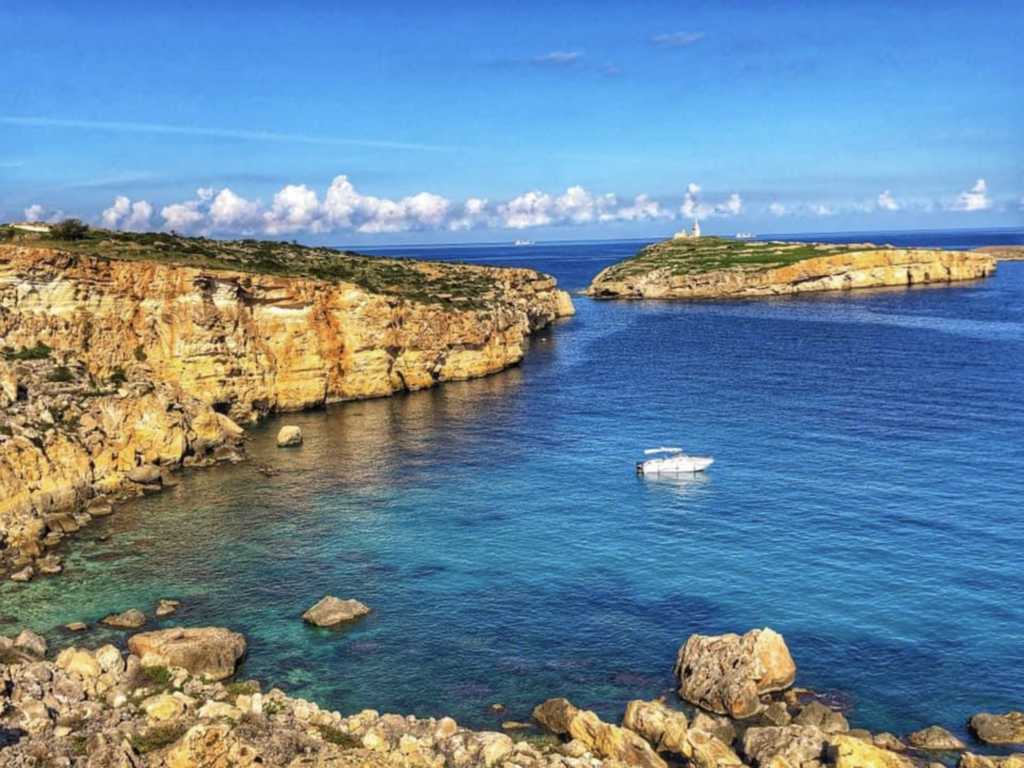
The nearest beach to where we stayed. Mandy enjoyed running to here many mornings!
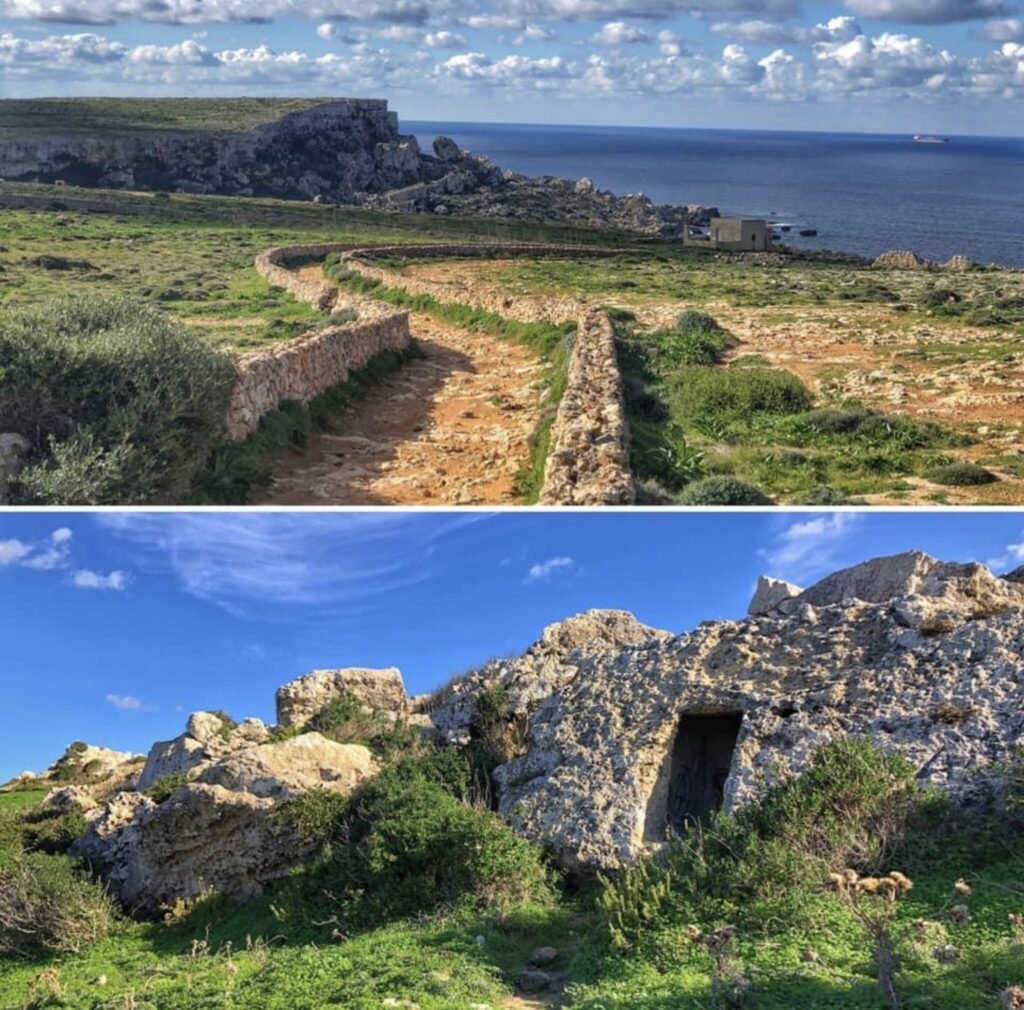
We loved stumbling on hidden caves, which were seemingly once someone’s homes. Wow, hard to believe! And they were everywhere.
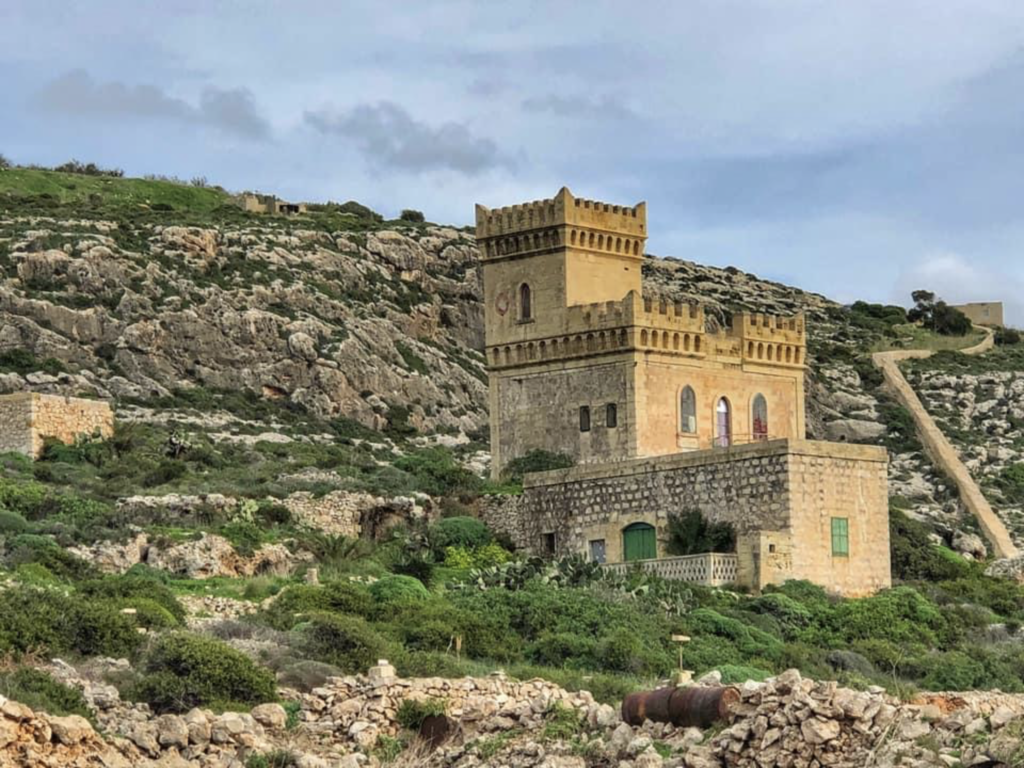
Fun surprises on the trail around every corner!
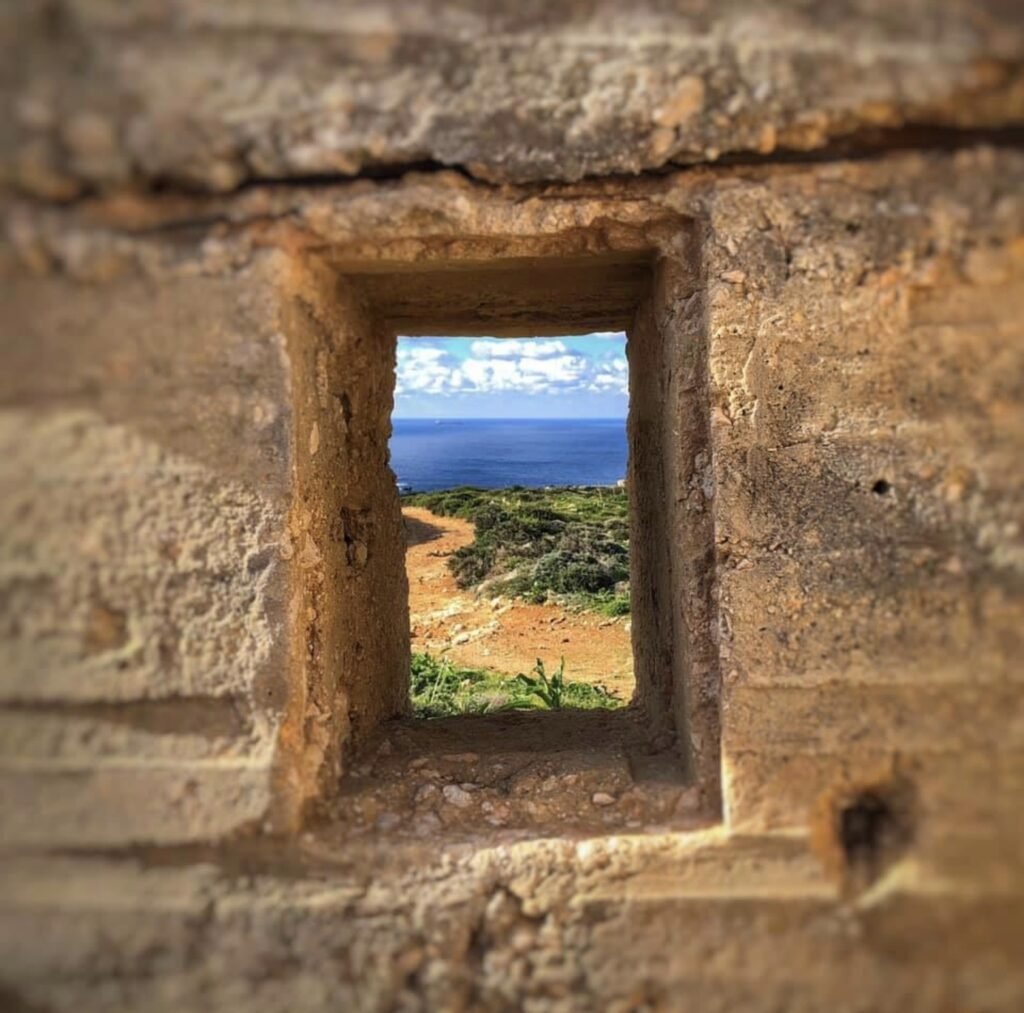
Picture window, anyone?

More stunning hiking views.

Unfortunately the mid-60’s temperatures were not quite warm enough for a full-on deluge. We did lots of splashing, however, and did plop into one swimming hole (top right!)…lasting about 3 minutes!
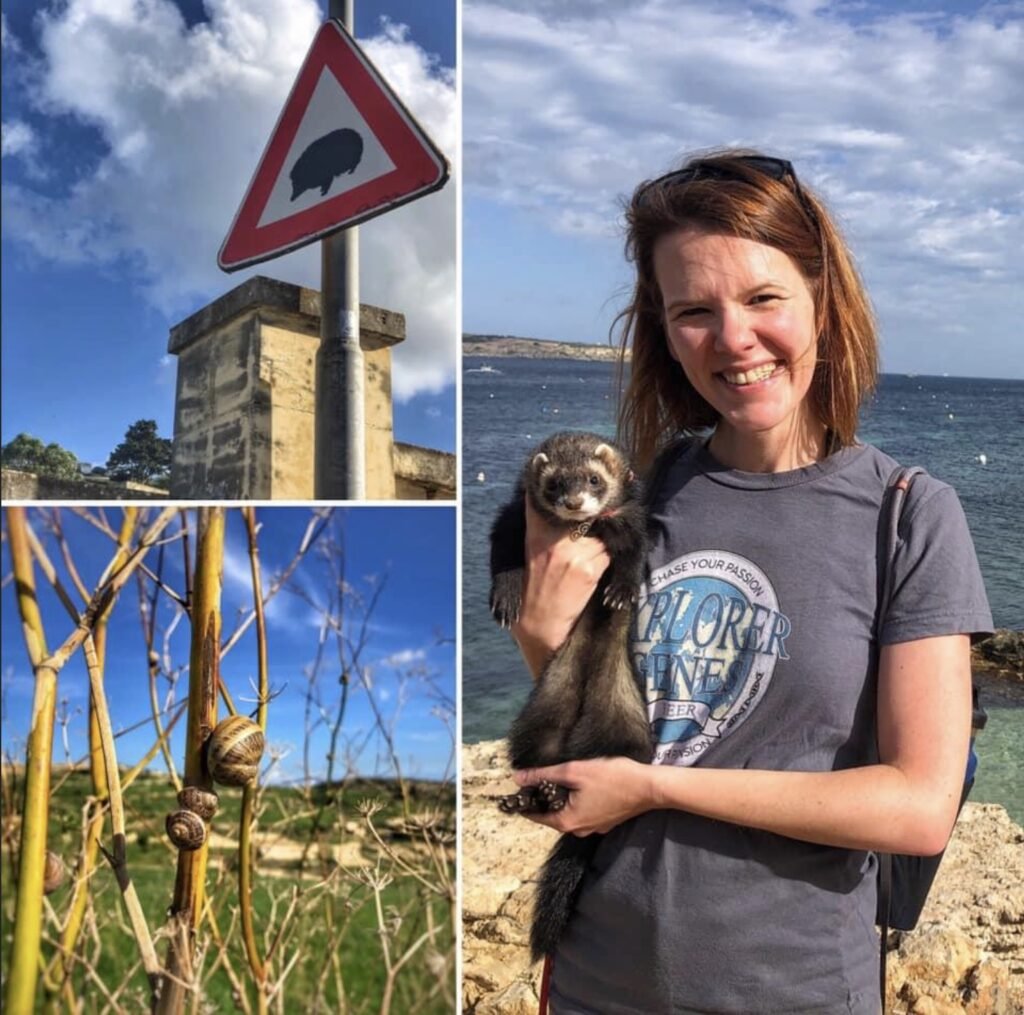
Flora & Fauna
Now an intro to the critters of Malta! Firstly, beware of hedgehogs because they like to dart across the road. Sadly, we only saw hedgehogs that had been run over and no darting ones. Snails are EVERYWHERE! Just look! Mandy met her first weasel!! Not to worry, although they do commonly run wild, this was a nice girl named Nina’s pet, which we borrowed for a photo opp! Side note: we did not see any rabbits. Most likely because these all end up on people’s plates. Rabbit is a very common dish in Malta, and no we did not eat any.

That was the fauna, so here’s the flora. In addition to an immeasurable amount of prickly pear cacti bedecked with prickly pear fruits (not good), we also found:
- these adorable little LEGO-esque flowers were everywhere!
- Why go to Trader Joe’s when you can pluck FREE almonds directly off a tree?
- A beautiful arboretum in Valletta! So green.
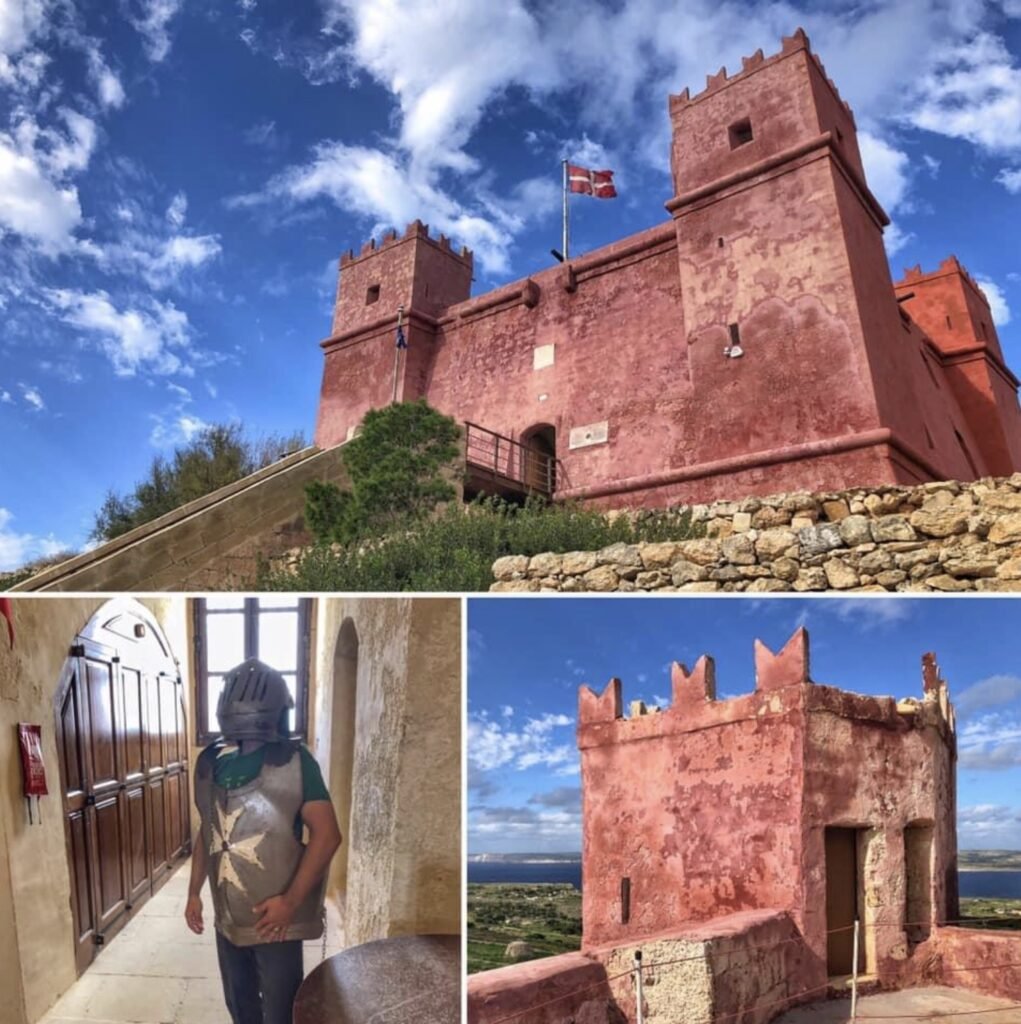
Visiting the Red Tower, also known as St Agatha’s Tower, near Melliha Bay was well worth the 2€ entrance. It was built between 1647 and 1649 and in addition to astonishing views, Greg got fitted for his armor and we learned of the importance of this tower’s strategic position in defending Malta during medieval times.

Everywhere you go in Malta you encounter beautiful architecture. This cathedral is no exception in Siggiewi.
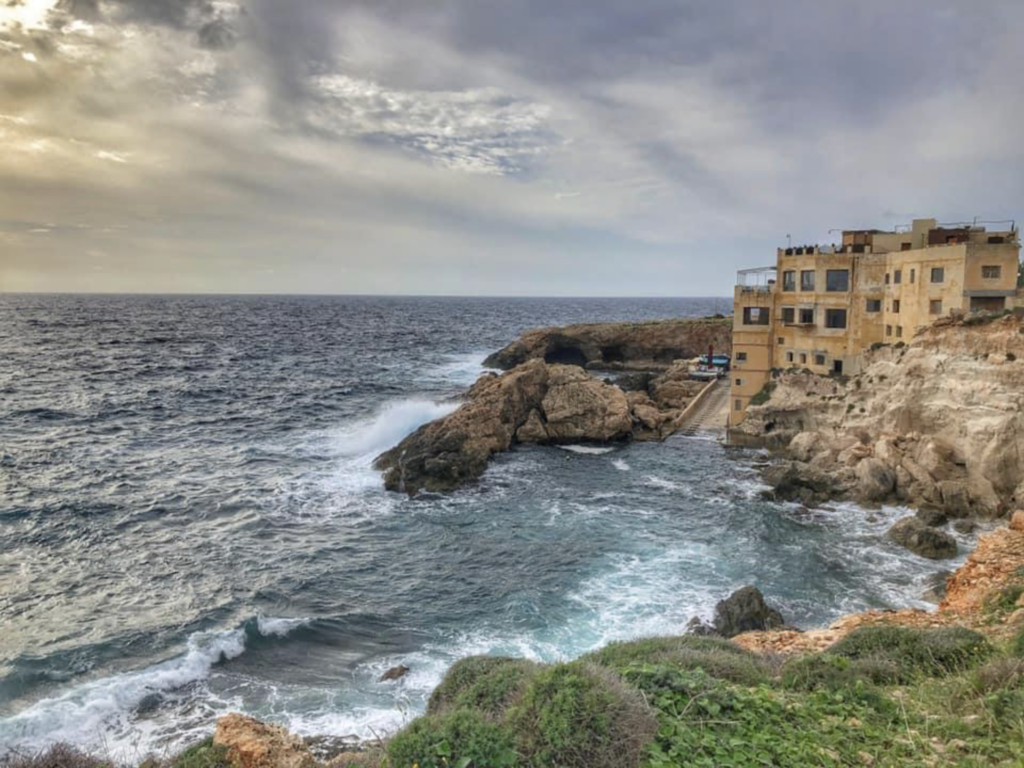
Ghar Lapsi
On a different walk to the village of Ghar Lapsi. It features beautiful sea caves, and a terrific trail which leads to the archeological sites of Mnajdra and Hagar Qim, from 3700 BC.

A view of the dock in Ghar Lapsi.
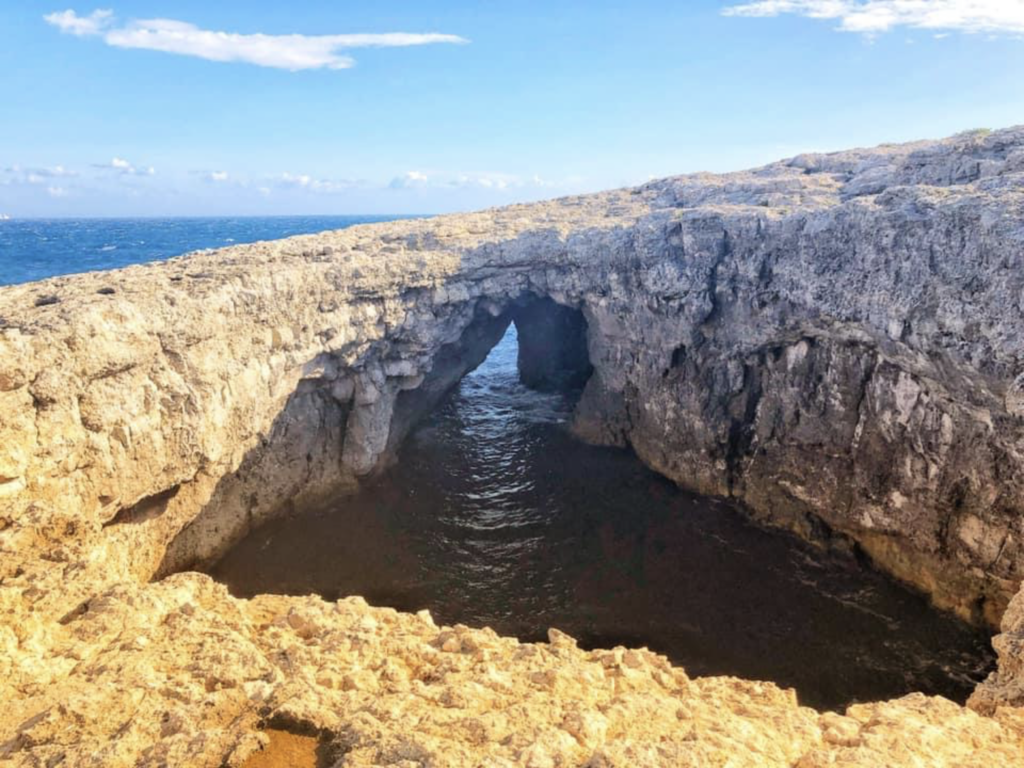
Coral Lagoon: an extraordinary local swimming site during the summer months with a unique swim-through cave. The water was incredibly choppy and rough the day we went.

The Mediterranean at Coral Lagoon was being pretty temperamental. This was the day after we had a very strong wind storm with 40+ mph gusts.
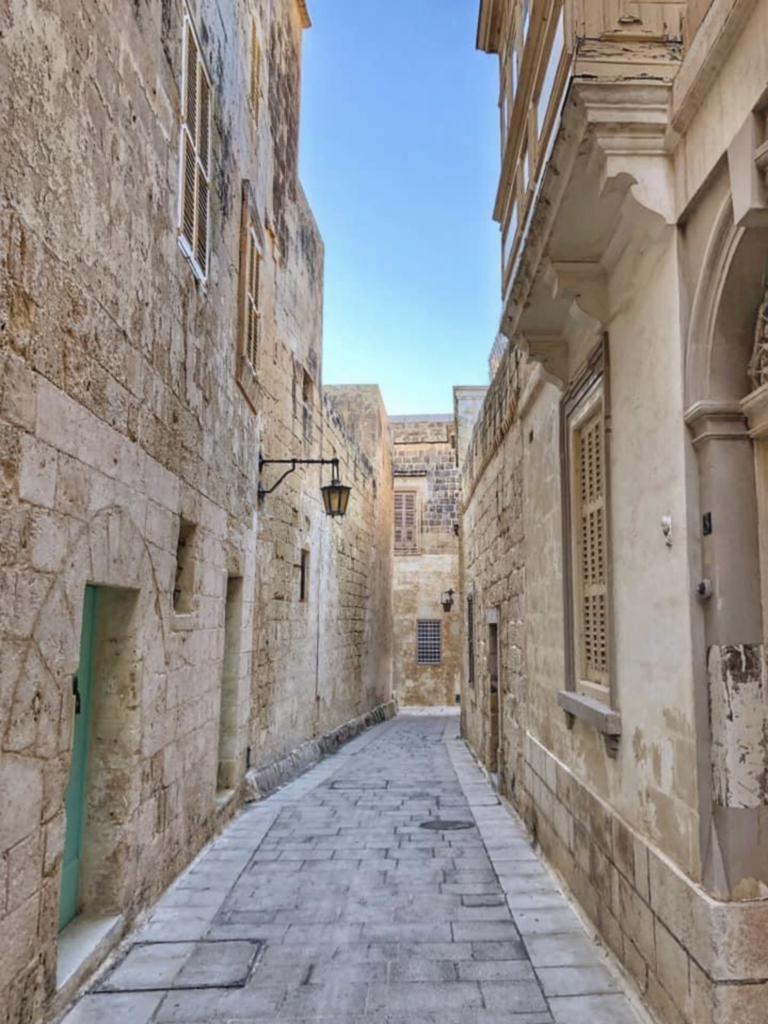
Mdina
A region first inhabited in 700 BC, exploring the streets of Mdina feels like walking into a Hollywood movie set. And it has been…many times, including Game of Thrones. But its fortified walls, towering position on one of the highest hills in Malta, and its alluring narrow maze-like streets could not be more authentic. Mdina a charming beauty to behold and not-to-be-missed.

The main cathedral in Mdina, naturally St Paul’s, was built in 1696 and is the oldest in Malta.
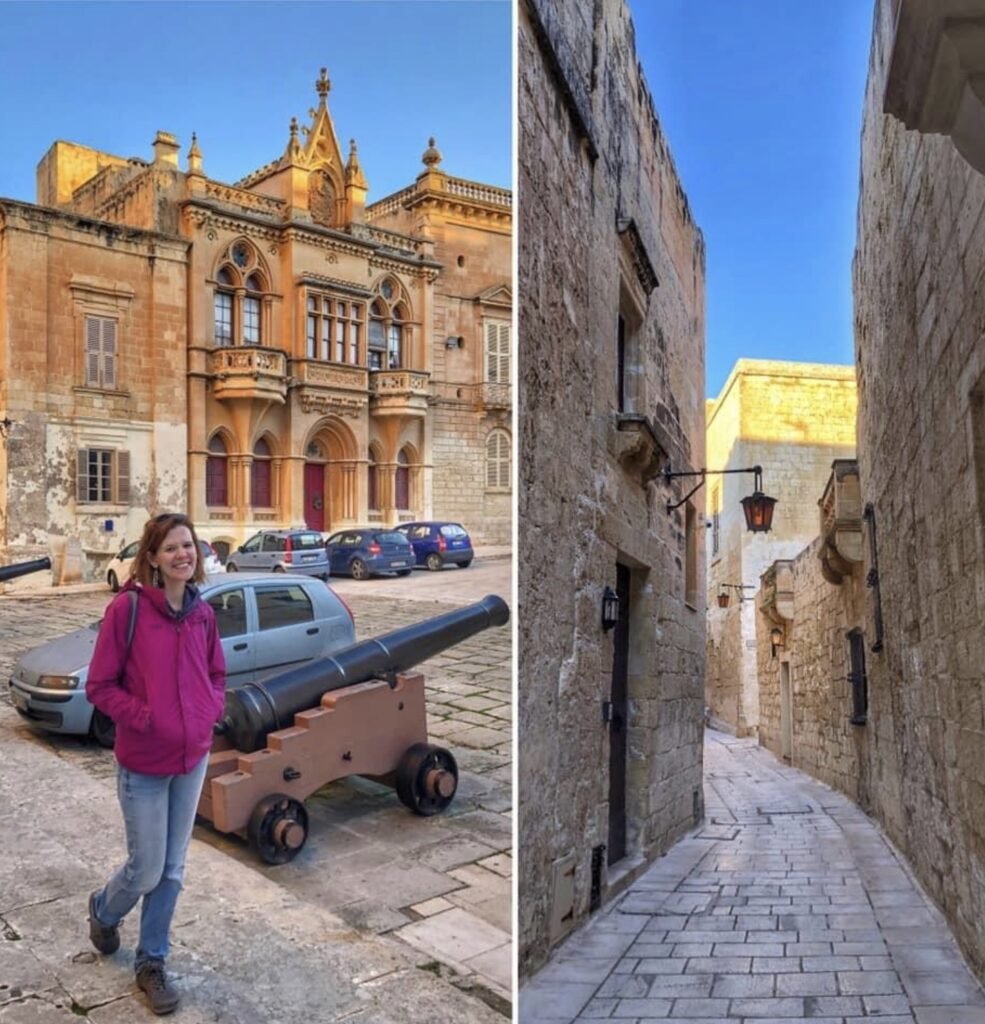
More Mdina magnificence.

Rabat
The nearby town of Rabat is also known for its charming streets and architecture. We found the bursts of color irresistible!

Visiting St Paul’s Catacombs in Rabat was a one-of-a-kind experience. We had no idea how extensive the network of tunnels and tombs would be. This amazing complex of maze like interconnected tunnels had been carved out of the limestone rock beneath the city streets of Rabat.
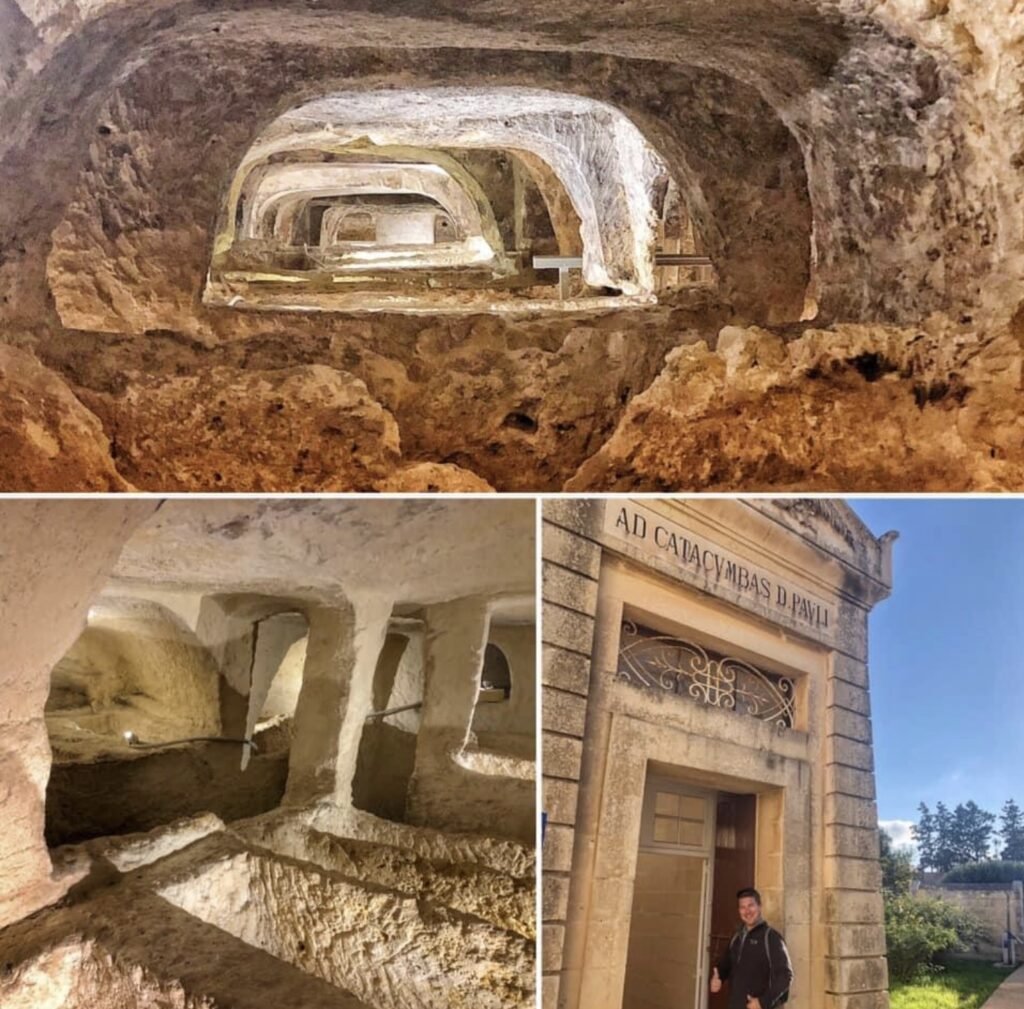
The underground Roman cemeteries were in use up to the 4th century AD. They represent the earliest and largest archaeological evidence of Christianity in Malta. Burials for Christians, Jews and Pagans were all found here. These tunnels were also used as WWII shelters.
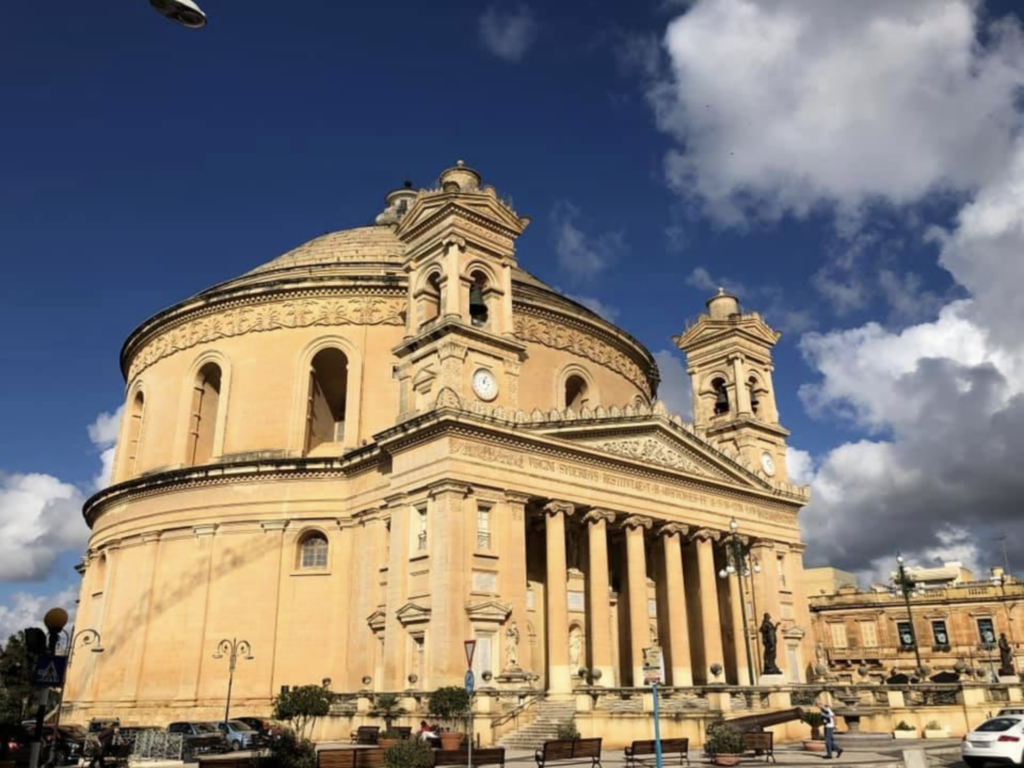
Mosta
The Mosta Dome, or Rotunda of Mosta in, you guessed it, the town of Mosta. The design of the present church built in 1833 is based on the Pantheon in Rome, and at one point had the third largest unsupported dome in the world. It was nearly destroyed during World War II on April 9, 1942 when a German aerial bomb dropped on the dome and fell on the floor during a Mass, and skittered across the church. However, in an obvious interpreted act of God, it failed to explode. On top of that, two other bombs were also dropped on the church and were deflected without any destruction at all!

The interior of the dome, and the bomb memorial are not to be missed. The dome is the third largest in the world.

One of the many World War II shelters around the island. Malta was one of the most intensively bombed areas of the war, although it is hardly talked about, and was under siege for nearly 2 1/2 years by the Italians and German armed forces. The civilians were deeply impacted with fear and starvation. The nearby island of Gozo was extremely affected by starvation due to lack of supplies.
We know the resilient people of Malta are very happy to have those times over with.



